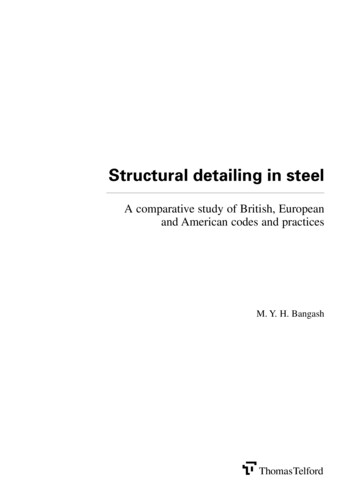
Transcription
Structural detailing in steelA comparative study of British, Europeanand American codes and practicesM. Y. H. Bangash
Published by Thomas Telford Publishing, Thomas Telford Ltd, 1 Heron Quay,London E14 4JD.URL: http://www.t-telford.co.ukDistributors for Thomas Telford books areUSA: ASCE Press, 1801 Alexander Bell Drive, Reston, VA 20191-4400,USAJapan: Maruzen Co. Ltd, Book Department, 3–10 Nihonbashi 2-chome,Chuo-ku, Tokyo 103Australia: DA Books and Journals, 648 Whitehorse Road, Mitcham 3132,VictoriaFirst published 2000A catalogue record for this book is available from the British LibraryISBN: 0 7277 2850 4 M. Y. H. Bangash, 2000All rights, including translation, reserved. Except as permitted by theCopyright, Designs and Patents Act 1988, no part of this publication may bereproduced, stored in a retrieval system or transmitted in any form or by anymeans, electronic, mechanical, photocopying or otherwise, without the priorwritten permission of the Books Publisher, Thomas Telford Publishing,Thomas Telford Ltd, 1 Heron Quay, London E14 4JD.This book is published on the understanding that the author is solelyresponsible for the statements made and opinions expressed in it and that itspublication does not necessarily imply that such statements and/or opinionsare or reflect the views or opinions of the publishers. While every effort hasbeen made to ensure that the statements made and the opinions expressed inthis publication provide a safe and accurate guide, no liability or responsibilitycan be accepted in this respect by the authors or publishers.Typeset by APEK Digital Imaging, BristolPrinted and bound in Great Britain by MPG Books, Bodmin, Cornwall
ContentsPrefaceivAcknowledgementsvMetric conversionsviDefinitionsviiIntroduction to codesixList of comparative symbolsxiv1. Introduction12. Structural steel43. Draughting practice for detailers184. Bolts and bolted joints345. Welding516. Design detailing of major steel components677. Steel buildings — case studies1158. Steel bridges — case studies170Appendix. Section properties213Bibliography235British Standards and other standards237ASTM Standards239
STRUCTURAL DETAILING IN STEELPrefaceThis steel detailing manual has been prepared to provide practical and up todate information on various aspects of steel construction for educators,designers, draughtsmen, detailers, fabricators and all others who have aninterest in structural steelwork.The text covers the full scope of structural detailing in the UK, Europe andthe USA. The text covers the fundamentals of drawing, continuing withdraughting practice and connections, the types of fastenings and theconventional methods of detailing components. Individual case studies areincluded.The types of structure covered represent the bulk of the typical fabricator’swork in commercial and industrial buildings, bridges, tanks, hydraulic andoffshore structures and power structures. Examples of steel detailing in CADformat are included in some of the chapters.Many of the drawings included are typical and, with minimal alteration, canbe adopted directly from the book and attached to individual drawings basedon a special code.This book should serve both as a primer for trainee detailers and as areference manual for more experienced personnel. Engineers, architects andcontractors will find the book useful for daily use and practice.M. Y. H. Bangashiv
PREAMBLEAcknowledgementsThe author acknowledges his appreciation to friends, colleagues and somestudents who have assisted in the early development of this book. The authorhas received a great deal of assistance and encouragement from the researchorganisations, engineering companies, consultants and constructors in steelwork and computer-aided design bureaus referred to in this book. The authoris particularly indebted to the following:British Standards Institute, UKAmerican Institute of Steel Construction, USAEuropean Union Group for EC3 Code, Brussels, BelgiumAmerican State Highways and Transportation OfficialsAmerican Society for Testing of MaterialsHighway Agency, UKWard and Cole, Consultants, UKStrucad, Derby, UKSwindell Dresseler Corp., Pittsburgh, USAMaster Series, Northern Ireland, UKAmerican Society of Civil Engineers, USAThe Steel Construction Institute, UKThe author is extremely grateful to Mike Chrimes, the Chief Librarian of theInstitution of Civil Engineers, London for providing facilities and support tocomplete this book.Certain valuable research materials were provided by the Institution ofStructural Engineers, London and they are acknowledged.The author is especially indebted to Dr F. Bangash for the preparation ofartwork included in this text.The author is grateful to Mr Shyam Shrestha of ASZ Partners, Ilford, fortaking the trouble to type the manuscript.v
STRUCTURAL DETAILING IN STEELMetric conversionsOverall geometrySpansDisplacementsSurface areaVolume1 ft 0·3048 m1 in. 25·4 mm1 ft2 0·0929 m21 ft3 0·0283 m31 yd3 0·765 m3Structural propertiesCross-sectional dimensionsAreaSection modulusMoment of inertia1 in. 25·4 mm1 in.2 645·2 mm21 in.3 16·39 103 mm31 in.4 0·4162 106 mm4Material propertiesDensityModulus of elasticity and stress1 lb/ft3 16·03 kg/m31 lb/in.2 0·006895 MPa1 kip/in.2 6·895 MPaLoadingsConcentrated loadsDensityLinear loadsSurface loadsvi1 lb 4·448 N1 kip 1000 lbf 4·448 kN1 lb/ft3 0·1571 kN/m31 kip/ft 14·59 kN/m1 lb/ft2 0·0479 kN/m21 kip/ft2 47·9 kN/m2
PREAMBLEDefinitionsThe European code EC3 gives a list of terms common to all the StructuralEurocodes, as well as some which apply only to steelwork. The Eurocodes usea number of new or unfamiliar expressions, for example the word ‘action’ isused to describe a load or imposed deformation. The following are thecommon definitions used in practically all codes dealing with structural steel.Beam A member predominantly subject to bending.Buckling resistance Limit of force or moment which a member canwithstand without buckling.Capacity Limit of force or moment which may be applied without causingfailure due to yielding or rupture.Column A vertical member of a structure carrying axial load and possiblymoments.Compact cross-section A cross-section which can develop the plasticmoment capacity of the section but in which local buckling prevents rotationat constant moment.Dead load All loads of constant magnitude and position that act permanently, including self-weight.Design strength The yield strength of the material multiplied by theappropriate partial factor.Effective length Length between points of effective restraint of a membermultiplied by a factor to take account of the end conditions and loading.Elastic design Design which assumes no redistribution of moments due toplastic rotation of a section throughout the structure.Empirical method Simplified method of design justified by experience ortesting.Factored load Specified load multiplied by the relevant partial factor.H-section A section with one central web and two equal flanges which hasan overall depth not greater than 1·2 times the width of the flange.I-section Section with central web and two equal flanges which has anoverall depth greater than 1·2 times the width of the flange.Imposed load Load on a structure or member other than wind load,produced by the external environment and intended occupancy or use.Lateral restraint For a beam: restraint which prevents lateral movement ofthe compression flange. For a column: restraint which prevents lateralmovement of the member in a particular plane.Plastic cross-section A cross-section which can develop a plastic hinge withsufficient rotation capacity to allow redistribution of bending moments withinthe structure.Plastic design Design method assuming redistribution of moments incontinuous construction.Semi-compact cross-section A cross-section in which the stress in theextreme fibres should be limited to yield because local buckling would preventdevelopment of the plastic moment capacity in the section.Serviceability limit states Those limit states which when exceeded can leadto the structure being unfit for its intended use.vii
STRUCTURAL DETAILING IN STEELSlender cross-section A cross-section in which yield of the extreme fibrescannot be attained because of premature local buckling.Slenderness The effective length divided by the radius of gyration.Strength Resistance to failure by yielding or buckling.Strut A member of a structure carrying predominantly compressive axialload.Ultimate limit state That state which if exceeded can cause collapse of partor the whole of the structure.viii
PREAMBLEIntroduction to codesThe structural design of steelwork is based on BS 5950 in the UK andcountries following this code. The title of this code is given below:BS 5950 Structural use of steelwork in building.This section has been compiled to help designers in the UK and USA toappreciate the principal differences and similarities of applying Eurocode 3:Part 1.1 (EC3) (originally European standard ENV 1993-1-1). This code willeventually become mandatory in Europe and the UK. It will, in future,supersede BS 5950 which has the following nine parts:Part 1 Code of practice for design in simple and continuous construction: hotrolled sectionsPart 2 Specification for materials, fabrication and erection: hot-rolledsectionsPart 3 Code of practice for design in composite constructionPart 4 Code of practice for design of floors with profiled steel sheetingPart 5 Code of practice for design in cold-formed sectionsPart 6 Code of practice for design in light gauge sheeting, decking andcladdingPart 7 Specification for materials and workmanship: cold-formed sectionsPart 8 Code of practice for design of the protection for structural steelworkPart 9 Code of practice for stressed skin designThe full range of Structural Eurocodes follows:Eurocode 1Eurocode 2Eurocode 3Eurocode 4Eurocode 5Eurocode 6Eurocode 7Eurocode 8Eurocode 9Basis of design and actions on structuresDesign of concrete structuresDesign of steel structuresDesign of composite steel and concrete structuresDesign of timber structuresDesign of masonry structuresGeotechnical design of structuresEarthquake resistance of structuresDesign of aluminium structuresThe codes will be issued by national standards organisations, such as BSI. Thefirst part of EC3 to be prepared was Part 1.1 General rules for building. Otherparts which are being prepared or are planned are given below:Part 1.2Part 1.3Part 2Part 3Part 4Part 5Part 6Part 7Part 8Fire resistanceCold-formed thin gauge members and sheetingBridges and plated structuresTowers, masts and chimneysTanks, silos and pipelinesPilingCrane structuresMarine and maritime structuresAgricultural structuresix
STRUCTURAL DETAILING IN STEELBS 5950 and EC3 together with the US codes on steel are classified by subjecttitle. The designers/detailers and conventional and CAD technicians will findthe classification extremely useful.British and European StandardsBS 4:Part 1: 1980BS 639: 1986BS 2901:Part 1: 1983Part 2: 1990Part 3: 1990Part 4: 1990Part 5: 1990BS 3692: 1967BS 4105: 1990BS 4165: 1984BS 4190: 1967BS 4320: 1968BS 4360: 1990BS 4620: 1970BS 4848:Part 4: 1972Part 5: 1980BS 4933: 1973BS 5135: 1984BS 5493: 1977BS 5531: 1988BS 5950:Part 2: 1992Part 3:Section 3.1: 1990Part 4: 1982Part 5: 1987xStructural steel sectionsSpecification for hot-rolled sectionsSpecification for covered carbon and carbonmanganese steel electrodes for manual metal-arcweldingFiller rods and wires for gas-shielded arcweldingFerritic steelsSpecification for stainless steelsSpecification for copper and copper alloysSpecification for aluminium and aluminiumalloys and magnesium alloysSpecification for nickel and nickel alloysSpecification for ISO metric precision hexagonbolts, screws and nuts — metric unitsSpecification for liquid carbon dioxide, industrialSpecification for electrode wires and fluxes forthe submerged arc welding of carbon steel andmedium-tensile steelSpecification for ISO metric black hexagon bolts,screws and nutsSpecification for metal washers for generalengineering purposes — metric seriesSpecification for weldable structural steelsSpecification for rivets for general engineeringpurposesHot-rolled structural steel sectionsEqual and unequal anglesFlatsSpecification for ISO metric black cup andcountersunk head bolts and screws with hexagonnutsSpecification for arc welding of carbon andcarbon-manganese steelsCode of Practice for protective coating of ironand steel structures against corrosionCode of Practice for safety in erecting structuralframesStructural use of steelwork in buildingSpecification for materials, fabrication and erection: hot-rolled sectionsDesign in composite constructionCode of Practice for design of simple andcontinuous composite beamsCode of Practice for design of floors with profiledsteel sheetingCode of Practice for design of cold-formed sections
PREAMBLEPart 7: 1992BS 6363: 1983BS 7084: 1989BS EN 10025: 1990BS EN 10029: 1991BS EN 10113:1: 19922: 19923: 1992BS EN 24014: 1992BS EN 24016: 1992BS EN 24017: 1992BS EN 24018: 1992BS EN 24032: 1992BS EN 24034: 1992BS 466: 1984BS 648: 1964BS 2573:Part 1: 1983Part 2: 1980:BS 4395:Part 1: 1969Part 2: 1969BS 4604:Part 1: 1970Part 2: 1970BS 5950:Part 1: 1990Part 8: 1990BS 6399Part 1: 1984Part 2: 1997Part 3: 1988BS 8110:Part 1: 1985Part 2: 1985Specification for materials and workmanship:cold-formed sectionsSpecification for welded cold-formed steel structural hollow sectionsSpecification for carbon and carbon-manganesesteel tubular cored welding electrodesSpecification for hot-rolled products of non-alloystructural steels and their technical delivery conditionsSpecification for tolerances on dimensions, shapeand mass for hot-rolled steel platesHot-rolled products in weldable fine grain structural steelsGeneral delivery conditionsDelivery conditions for normalised steelsDelivery conditions for thermo-mechanical rolledsteelsHexagon head bolts. Product grades A and BHexagon head bolts. Product grade CHexagon head screws. Product grades A and BHexagon head screws. Product grade CHexagon nuts, style 1. Product grades A and BHexagon nuts. Product grade CSpecification for power-driven overhead travelling cranes, semi-goliath and goliath cranes forgeneral useSchedule of weights of building materialsRules for the design of cranesSpecification for classification, stress calculationsand design criteria for structuresSpecification for classification, stress calculationsand design of mechanismsSpecification for high strength friction grip boltsand associated nuts and washers for structuralengineeringGeneral gradeHigher grade bolts and nuts and general gradewashersSpecification for the use of high-strength frictiongrip bolts in structural steelwork — metric seriesGeneral gradeHigher grade (parallel shank)Structural use of steelwork in buildingCode of Practice for design in simple andcontinuous construction: hot-rolled sectionsCode of Practice for fire-resistant designLoading for buildingsCode of Practice for dead and imposed loadsCode of Practice for wind loadingCode of Practice for imposed roof loadsStructural use of concreteCode of Practice for design and constructionCode of Practice for special circumstancesBS 5950 is less definitive; it gives recommendations for the design ofxi
STRUCTURAL DETAILING IN STEELstructural steelwork in buildings and allied structures not specifically coveredin other British Standards.Eurocode 3: Part 1.1 contains general principles which are valid for all steelstructures as well as detailed application rules for ordinary buildings. Theremaining parts of the Eurocode will cover bridges and plated structures,towers, masts and chimneys, tanks, silos and pipelines, piling, cranestructures, marine and maritime structures, agricultural structures and fireresistance.xii
PREAMBLEUS codes on steelFu 636770636770100–130110–130Over 8To 8To 0·5To 1·54–81·5–40·75–1·5To 0·75To 6To 2To 1·25To 1·251·5–40·75–1·5To 0·755–84–5To 42·5–6To 2·5General; buildingsGeneral; buildingsMetal building systemsMetal building systemsWelded constructionWelded constructionWelded constructionWelded constructionBuildings; bridgesBuildings; bridgesBuildings; bridgesBuildings; bridgesBridgesBridgesBridgesWeathering steelWeathering steelWeathering steel bridgesPlates for weldingPlates for welding70110–190To 4Plates for strength,low-alloyQuenchedand temperedlow-alloyQuenchedand temperedalloyA529 Grade 42Grade 50A441A572 Grade 42Grade 50Grade 60Grade 65A242A588A514A852Common usage* ksi kips/in.21 inch 25·4 mm†Cold-formed A570Sections A to EBuildings and bridgesHot and cold-rolled steelCold-rolled sheet steelFor cold-formed sectionsA609A611Grade A to ESheets, strips, coils, cut lengthsBuilding and bridgesHot-formedWelded and seamless tubingA618Grade A to EGeneral purposeAll aboveCombinationsA709Grade 36Grade 50Grade 100Buildings and bridgesWelded and boltedConstruction, alloy steelPlates for welded constructionBolted construction, etc.xiii
STRUCTURAL DETAILING IN STEELList of comparative symbolsxivParameter (common)AISCBS 5950EC3AreaCross-sectional area of steel sectionShear area (sections)Breadth of sectionOutstand of flangeStiff bearing lengthDepth of sectionDepth of webModulus of elasticity of steelEccentricityUltimate applied axial loadShear force (sections)Second moment of area about the major axisSecond moment of area about the minor axisLength of spanEffective lengthLarger end momentMaximum moment on the member or portion of themember under considerationBuckling resistance moment (lateral torsional)Moment capacity of section about the major and minoraxes in the absence of axial loadEccentricity momentMid-span moment on a simply supported span equalto the unrestrained lengthUltimate momentMaximum moment occurring between lateral restraintson a beamEquivalent uniform momentEquivalent uniform moment factorSlenderness correction factorCompression resistance of columnUltimate web bearing capacityShear capacity of a sectionBending strengthCompressive strengthBuckling resistance of an unstiffened webDesign strength of steelRadius of gyration of a member about its major andminor axesPlastic modulus about the major and minor axesThickness of a flange or legThickness of a web or as otherwise defined in a clauseBuckling parameter of the sectionSlenderness factor for beamTorsional index of sectionElastic modulus about the major and minor axesRatio of smaller to larger end momentOverall load factorLoad variation factor: function of l1 and l2Material strength factorAA, As–B––hTEePV, FIxIyLLefMzMmaxAAgAvBbb1DdEeFcFvIxIyLLEMMA, MmaxAAgAvB, b––d, hdEeP, WVIxIyL, lLeMMmaxMb–MbMcz, McyMbz,RdMcx, McyMeMsMeMoMeMsMuMsMuMxMuM–––P, F, NPcrv, sFbFcPwcFy x, yMmnPcPcripPvPcfcPwPy x, y–––NNcrSPcfcPwPyiyy, izzs, zt, dt–––s––––sx, syTtu xzx, zy f l mwx, wyt, Tt–––wel– f– m
PREAMBLEParameter (common)AISCBS 5950EC3Ratio M/Mo that is the ratio of the larger end momentto the midspan moment on a simply supported spanDeflectionConstant (275/Py)1/2Slenderness, that is the effective length divided by theradius of gyrationEquivalent slendernessAccidental actionAreaBolt forceCapacity; fixed value; factorDamage (fatigue assessment)Modulus of elasticityEffect of actionsActionForcePermanent actionShear modulusTotal horizontal load or reactionStiffness factor (I/L)Variable actionResistance; reaction internal forces and moments (withsubscripts d or k)Stiffness (shear, rotational . . . stiffness with subscripts)Torsional moment; temperatureShear force; total vertical load or reactionSection modulusValue of a property of a materialDifference in . . . (precedes main symbol)Distance; geometrical dataThroat thickness of weldArea ratioDistance; outstandDiameter; depth; length of diagonalEccentricity; shift of centroidal axisEdge distance; end distanceStrength (of a material)Gap; width of a tension fieldHeightRadius of gyration; integerCoefficient; factorRatio of normal forces or normal stressesNumber of .Pitch; spacingUniformly distributed forceRadius; root radiusStaggered pitch; distanceThicknessMajor axisMinor axisRectangular axesAngle; ratio; factorCoefficient of linear thermal expansionAngle; ratio; factorPartial safety factor; ratioDeflection; deformationCoefficient (in Annex E)Angle; slopeSlip factor; factorPoisson’s ratioReduction factor; unit mass– D DD, a–c, , a ––AFt , P–FnE––F, P–GHK–RLTLT–AF, P––E––F,P–GHK–RAABCDEFFGGGHKQR, SKT, MtSS, Z–––te, T, a–––al, e– , F–H, hr–––pp, w, qr, Rp, gd, tx, xy, yxx, yy–K, ST, mtS, VS–––––––e– –H, hr, i–––pw, qrst, du, u , xx, yy–STVWX––D,––– , – ,––– aaacdeef, ghiknnpqrstuu , y, y, zz xv
STRUCTURAL DETAILING IN STEELxviParameter (common)AISCBS 5950EC3Normal stressShear stressRotation; slope; ratioReduction factor (for buckling)Stress ratio; reduction factorFactors defining representative values of variable actionsCross area of boltPlanar area of web at beam to column connectionArea of compression flangeArea of bottom cover plate composite designCross-sectional area of stiffenerArea of the girder webColumn coefficientBending factor at x–x; y–yBending coefficient upon moment gradientCoefficient applied to the bending termRatio of critical web stressEuler stressSecond moment area (composite)Coefficient used in column formulaYield strengthCoefficient used in column formulaSubscripts: unbraced, dead liveReduced girder, compression, flangeLarger, smaller, shearBearing, tensile or top; transformedConcentrated transverse load or reactionStatistical moment of the cover plate about neutral axisof transformed sectionClear distance between transverse stiffenersAmplification factor @ x–x and y–yEffective width of concrete flange (composite section)Distance from the neutral axis to the extreme fibreFlange width of a beamTotal depth of steel section (composite)Computed axial stressComputed tensile stressComputed bending stressComputed shear stressUnbraced lengthModular ratioAllowable shear stress resistance by a connectorDistance from the neutral axis to the centroidDistance from the neutral axis to the outermost fibrePitchPermitted stressDistance from the centroid to the outer of an angle , v––––AbAbcAfApASTAWBBx, ByCbCmC F cItrJFy, YG, HU, D, L0, y, c, f2, 1, p, t, rRQ –fy, Y–U, D, L–––W– , AbAbcAc–ASWAW–––––PcrIcomp–Fy, y–U, D, L–––W–aaxx, ayybcbfdsfaftfbfrlnqyybsFkl–B, byBf, bfh, D––––l––yyb , ys, pPy–l–byBf, bfh, D––––l––y, x, zybs, pPy–
1. IntroductionThis chapter is devoted exclusively to steel detailers/draughtsmen and theirresponsibilities towards engineers, architects and fabricators. Their majorfunction is to serve as an intermediary between the planners and executor ofa project. It is therefore important that they should have a clear understandingof the engineers’ intent and the ability to translate it into a graphicrepresentation. The detailers/draughtsmen must have a knowledge of thevarious processes involved, including:(a)(b)types of steel structures to be built and how they are built,a permanent record of the designers’/engineers’ intent, including design,calculations and sketches,(c) construction and fabrication of the steel structural components,(d ) conveying information on all aspects of detailing on the lines given bythe engineer or an architect, by manual and computer aided means,(e) clarity of presentation and accuracy of information,( f ) project organisation and the steel detailer’s role in it.1.1. Detail drawingsStructures are represented by means of elevations, plans and cross-sectionswith, where necessary, enlarged sections of special areas of the structure thatrequire more detail for additional information. The detailers must be familiarwith the instrumentation to be employed in the production of drawings. Theymust be familiar with the type of code and the methods which it sets out fordrawings. Whether it is a building, a bridge or any other structure, theelevation and plan must be to a scale sufficient to show, by means of suitableannotations, the sizes and shapes of the members. Where support bearings andspecial end member connections are involved, they are to be given on anenlarged scale, in sufficient detail to enable the ironworker, the blacksmith andthe carpenter to construct these components to a reasonable degree ofaccuracy.With the advent of structural steel, prefabrication became essential, and thisbrought with it the need to supplement the arrangement drawings with detaildrawings of all individual members and components. These are known as shopdetail drawings and are usually prepared by the steel fabricating company inits own drawing office for use in its workshops. They are based on the layoutand arrangement drawings supplied by the owner, or by the consultingengineer appointed to carry out the design. The job of the detailer is to checkthe information and drawings from the workshop on the fabrication of steelcomponents based on the requirements of a typical steel code and the designdrawings provided by their office. It is in the checking of these drawings thatthe structural steel detailers find their role and are able to play a vital part inthe sequence of events that comprise the total activity of structuralengineering.1
STRUCTURAL DETAILING IN STEELThe detailer should look for the following items:(a)that shop drawings are correct with regard to stylised representationinvolving the use of standardised, abbreviated notation and specialsymbols,(b) that the information transmitted is clearly given,(c) any variations that need to be discussed with the designer,(d ) where a large amount of technical data given, the detailer’s job involvesrecording and conveying it in a simple and concise manner.1.2. Function of the steelwork detailerThe role of the steelwork draughtsman or detailer will now be examined moreclosely. When the contract is placed with a steelwork fabricator, and assumingthat the steelwork detailer works for the fabricator, their duties can becategorised as follows.(a)The consulting engineer’s drawings and specifications are passed on bythe company management to the drawing office, where the drawingoffice manager assesses the extent, complexity and time content of thejob.(b) The section leader confers with a senior detailer/draughtsman whoconstitutes a team of draughtsmen on the basis of expertise in specificareas gained from experience in previous contracts.(c) The first function is to prepare a list of steel materials from the layoutdrawings provided by the consulting engineer, enabling the contractor toreserve the items from stock or to place orders with steel merchants orsteel mills.(d ) The detailers proceed with the preparation of the steel work detailingdrawings, providing an accurate representation of components ofstructures, namely, beams, girders, trusses, columns, bracings, stairways,platforms, rails, brackets, girts, purlins etc., and where other structuressuch as bridges, towers, tanks etc., are involved, these will followbroadly the same pattern.(e) An experienced senior draughtsman or detailer must carefully supervisedrawings and carefully scrutinise them as a checker. It is essential tocorrect the errors at this stage, as the correction of errors duringfabrication in the shop or during erection on site will be infinitely moreexpensive. Draughtsmen should be critical of their own work, subconsciously acting as their own checker, to ensure that, to the best of theirability, their drawings are error-free.( f ) The detail drawings are sent to the fabrication shop, where work is putin hand, drawing the material from stock, cutting it to exact length,drilling or punching the necessary holes and assembling the various partsby means of bolting or welding to make up the components orsubassemblies ready for transport to site.( g) The drawing office, whether using a manual system or computer aidedfacilities, must now proceed with the preparation of erection drawings,showing steel framework in skeleton form (elevations, plans and crosssections). These drawings should be checked by the senior detailer andendorsed by a qualified structural engineer. The steel erector will refer tothese drawings for the assembly of the structure on site. The position ofeach component is identified by a distinguishing erection mark. In thefabrication shop, such erection marks are hand-marked, painted ortagged onto the steel components.2
INTRODUCTION(h)All drawings are updated to incorporate any revisions that have occurredduring the progress of the job and a complete set of prints is handed tothe engineer for filing. These serve as a record of the work and are usefulfor future reference.1.3. Project organisationIt is important to consider the role of the detailer in the overall managementand technical organisation that is involved in the steel construction project.(a)When the owner appoints the architect and engineer for the steel project,they shall carry out the following:(i) the architect prepares the preliminary planning and detailedplanning of drawings and specifications and sends them to thestructural engineer.(ii) The structural engineer then prepares preliminary design drawingsand, with the help of quantity surveyors, indicates costs to thearchitects, or directly to the owners where architects are notinvolved.(b) The detailer acts as a liaison between the engineer and the contractor,and is responsible, whether working for the engineer or steelworkcontractor, for the preparation of the general arrangement (GA)drawings, shop drawings and the erection drawings.(c) The detailer liaises with the steelwork contractor during erection ofsteelwork on site, ensuring that the engineer/designer is fully informedon day-to-day erection problems, particularly non-com
This steel detailing manual has been prepared to provide practical and up to date information on various aspects of steel construction for educators, designers, draughtsmen, detailers, fabricators and all others who have an interest in structural steelwork. The text covers the full scope of structural detailing in the UK, Europe and the USA.
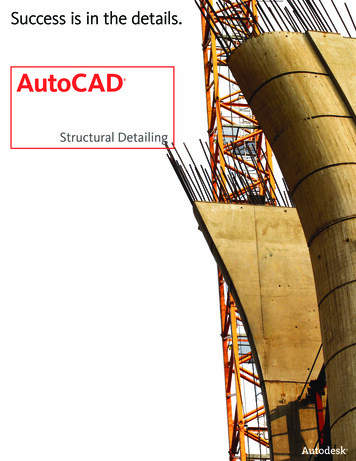
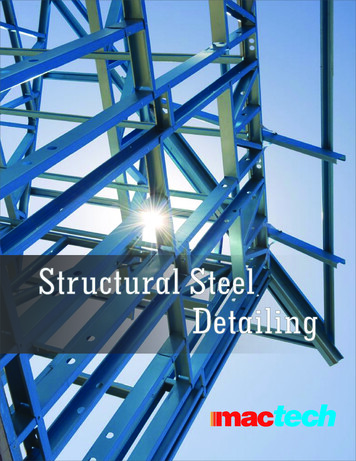
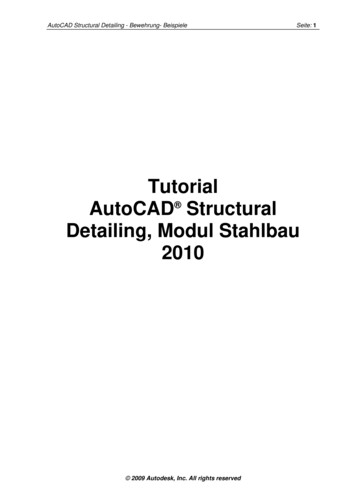

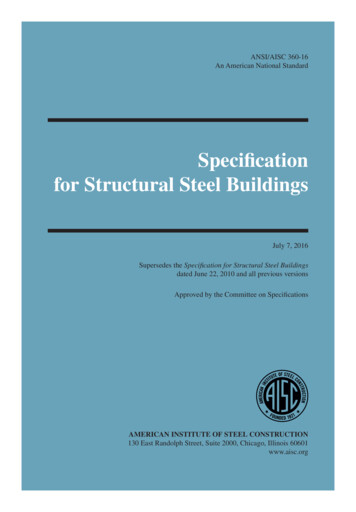
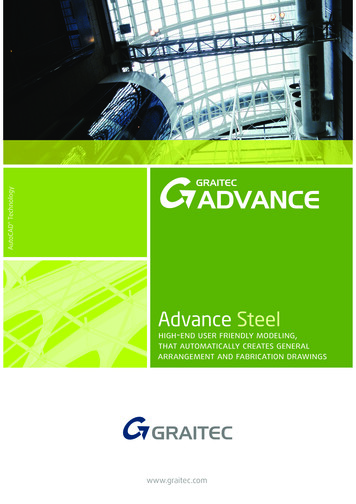

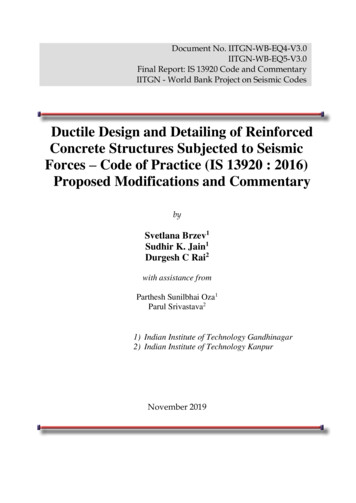
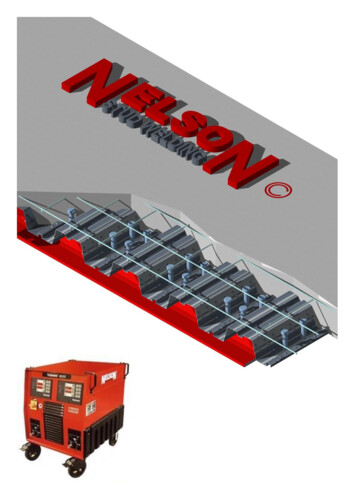
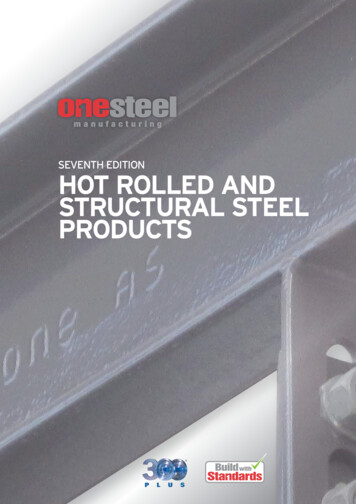
![Autocad Structural Detailing 2012 Crack Free [REPACK] - Emit Post](/img/58/autocad-structural-detailing-2012-crack-free-download.jpg)